That thing was not UL Listed
and should never have been plugged into AC power. It violated the safety codes of lots of countries.
Never plug anything into AC power that isn't UL Listed.*

Buy from reputable vendors in the future. Note that on Amazon, many third party (eBay crud tier) items ship from Amazon warehouses with Prime. Make sure the seller and shipper are both Amazon, and you have a chance of getting a better quality product. Amazon seems to follow the "bricks and mortar retail" quality laws on their own stuff.
The safer option is to buy from actual bricks and mortar vendors (even if you mail order from them), such as Home Depot, Galco, Grainger, Radio Shack (though watch out these days) etc. Sorry, there's slim pickings these days for electronics bricks and mortar. Mouser and Digi-Key and McMaster-Carr have been reliable IME.
* Or if you want to get into the gory details...
Listings from other NRTLs are generally acceptable. That is because the other NRTLs duplicate UL's high level of independent third-party scrutiny. Off the top of my head, British BSI, German TUV, a dozen others. UL and the other NRTLs are extremely aggressive about defending their mark, and as a result, UL, CSA, BSI and TUV marks are almost never seen faked.
Who the heck is USA OSHA to decide who is an NRTL? I don't know, but somebody has to do it, and they do a good job, and many agencies in many countries simply defer to that list rather than try to administer their own list.
The CE mark is universally faked, mockingly, on a "catch me if you can" basis by pretty much every manufacturer who keeps their assets outside the reach of EU authorities. The only way to count on that mark is to buy at a competent, trustworthy bricks-and-mortar shop physically inside the EU whose assets are inside the EU. Walk into Wickes and you're fine. With mail-order, all bets are off. It only works if you have a responsbile in-EU seller, such as Wickes.co.uk or Mouser. But many warehouses, such as Amazon's, do drop-shipping for many third-party sellers. Amazon is not responsible for regulatory compliance for third-party items, even those sold on its site. So effectively, ordering a third party item on Amazon (or other website where Amazon or a like-minded shipper is the drop-shipper) is the same as direct ordering overseas - there are no consequences for faking the CE mark, so it most likely is faked on a product whose distinctive feature is that it is a bargain.
Pretty much the same for the CCC mark. The manufacturer may be in the jurisdiction of the mark issuer, but the government turns a blind eye if the item is only for export.
I have researched these companies. As an example, I found one who claimed to be a 100-year-old famous German electronics firm which had merged with a four-year-old American LLC. Their USA address was an apartment block in Sunnyvale. Their German address was a drop box in downtown Dortmund. Their China address was a massive industrial park. Nothing within the reach of EU authorities. They had bought the corporate shell of the defunct electronics company.
I realize many readers want to believe those oh-so-cheap items on Amazon are legal and safe. I'm sorry to burst your bubble.
Note that even when CE is working as intended, by an EU company with EU assets selling inside EU watched by EU regulators, the CE mark is still a self-certification, which is weak tea compared to a third party NRTL certification and followup examination. EU used to agree; that is why BSI and TUV were formed in the first place.


